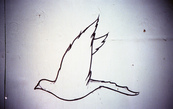|
Georges Simenon was one of the most prolific novelists of the twentieth century, publishing 425 books in his career, including more than 200 works of pulp fiction under 16 different pseudonyms, as well as 220 novels in his own name and three volumes of autobiography. Remarkably, he didn’t write every day.
The Belgian-French novelist worked in intense bursts of literary activity, each lasting two or three weeks, separated by weeks or months of no writing at all. Even during his productive weeks, Simenon didn’t write for very long each day. His typical schedule was to wake at 6:00 A.M., procure coffee, and write from 6:30 to 9:30. Then he would go for a long walk, eat lunch at 12:30, and take a one-hour nap. In the afternoon he spent time with his children and took another walk before dinner, television, and bed at 10:00 P.M. Simenon liked to portray himself as a methodical writing machine—he could compose up to eighty typed pages in a session, making virtually no revisions after the fact—but he did have his share of superstitious behaviors. No one ever saw him working; the “Do Not Disturb” sign he hung on his door was to be taken seriously. He insisted on wearing the same clothes throughout the composition of each novel. He kept tranquilizers in his shirt pocket, in case he needed to ease the anxiety that beset him at the beginning of each new book. And he weighed himself before and after every book, estimating that each one cost him nearly a liter and a half of sweat. Simenon’s astonishing literary productivity was matched, or even surpassed, in one other area of his daily life—his sexual appetite. “Most people work every day and enjoy sex periodically,” Patrick Marnham notes in his biography of the writer. “Simenon had sex every day and every few months indulged in a frenzied orgy of work.” When living in Paris, Simenon frequently slept with four different women in the same day. He estimated that he bedded ten thousand women in his life. (His second wife disagreed, putting the total closer to twelve hundred.) He explained his sexual hunger as the result of “extreme curiosity” about the opposite sex: “Women have always been exceptional people for me whom I have vainly tried to understand. It has been a lifelong, ceaseless quest. And how could I have created dozens, perhaps hundreds, of female characters in my novels if I had not experienced those adventures which lasted for two hours or ten minutes?” Daily Rituals: How Artists Work by Mason Currey . . . just as a matter of interest, tell me something: how long do you sleep each night?
The proverbial eight hours. Ask anyone and they say automatically ‘eight hours’. As a matter of fact you sleep about ten and a half hours, like the majority of people. I’ve timed you on a number of occasions. I myself sleep eleven. Yet thirty years ago people did indeed sleep eight hours, and a century before that they slept six or seven. In Vasari’s Lives one reads of Michelangelo sleeping for only four or five hours, painting all day at the age of eighty and then working through the night over his anatomy table with a candle strapped to his forehead. Now he’s regarded as a prodigy, but it was unremarkable then. How do you think the ancients, from Plato to Shakespeare, Aristotle to Aquinas, were able to cram so much work into their lives? Simply because they had an extra six or seven hours every day. The Complete Stories of J. G. Ballard by J. G. Ballard I love this book by Chris Guillebeau so I thought I would post a part I thought really helpful to the starting entrepreneur. If you like it, check it out on Amazon through this affiliate link.
The $100 Startup: Reinvent the Way You Make a Living, Do What You Love, and Create a New Future D “Plans are only good intentions unless they immediately degenerate into hard work.” —PETER F. DRUCKER "There’s nothing wrong with planning, but you can spend a lifetime making a plan that never turns into action. In the battle between planning and action, action wins. Here’s how you do it. A marketable idea doesn’t have to be a big, groundbreaking idea; it just has to provide a solution to a problem or be useful enough that other people are willing to pay for it. Don’t think innovation; think usefulness. Seven Steps to Instant Market Testing 1. You need to care about the problem you are going to solve, and there has to be a sizable number of other people who also care. 2. Make sure the market is big enough. 3. Focus on eliminating “blatant admitted pain.” The product needs to solve a problem that causes pain that the market knows it has. 4. Almost everything that is being sold is for either a deep pain or a deep desire. 5. Always think in terms of solutions. Make sure your solution is different and better. 6. Ask others about the idea but make sure the people you ask are your potential target market. 7. Create an outline for what you are doing and show it to a subgroup of your community. KEEP COSTS LOW. By investing sweat equity instead of money in your project, you’ll avoid going into debt and minimize the impact of failure if it doesn’t work. GET THE FIRST SALE AS SOON AS POSSIBLE. In a microbusiness built on low costs and quick action, you don’t need to do much formal planning. Mostly, you need the elements we’ve discussed throughout the book: a product or service, a group of customers, and a way to get paid." The $100 Startup: Reinvent the Way You Make a Living, Do What You Love, and Create a New Future "The promise of reward has even been used to help people overcome addiction. One of the most effective intervention strategies in alcohol and drug recovery is something called the fish bowl. Patients who pass their drug tests win the opportunity to draw a slip of paper out of a bowl. About half of these slips have a prize listed on them, ranging in value from $1 to $20. Only one slip has a big prize, worth $100. Half of the slips have no prize value at all—instead, they say, “Keep up the good work.” This means that when you reach your hand into the fish bowl, the odds are you’re going to end up with a prize worth $1 or a few kind words. This shouldn’t be motivating—but it is. In one study, 83 percent of patients who had access to fish bowl rewards stayed in treatment for the whole twelve weeks, compared with only 20 percent of patients receiving standard treatment without the promise of reward. Eighty percent of the fish bowl patients passed all their drug tests, compared with only 40 percent of the standard treatment group. When the intervention was over, the fish bowl group was also far less likely to relapse than patients who received standard treatment—even without the continued promise of reward. Amazingly, the fish bowl technique works even better than paying patients for passing their drug tests—despite the fact that patients end up with far less “reward” from the fish bowl than they would from guaranteed payments. This highlights the power of an unpredictable reward. Our reward system gets much more excited about a possible big win than a guaranteed smaller reward, and it will motivate us to do whatever provides the chance to win. This is why people would rather play the lottery than earn a guaranteed 2 percent interest in a savings account, and why even the lowest employee in a company should be made to believe he could someday be the CEO." The Willpower Instinct: How Self-Control Works, Why It Matters, and What You Can DoTo Get More of It by Ph.D., Kelly McGonigal |
Click to set custom HTML
Categories
All
Disclosure of Material Connection:
Some of the links in the post above are “affiliate links.” This means if you click on the link and purchase the item, I will receive an affiliate commission. Regardless, I only recommend products or services I use personally and believe will add value to my readers. I am disclosing this in accordance with the Federal Trade Commission’s 16 CFR, Part 255: “Guides Concerning the Use of Endorsements and Testimonials in Advertising.” |
Photos from Wesley Oostvogels, Thomas Leuthard, swanksalot, Robert Scoble, Lord Jim, Pink Sherbet Photography, jonrawlinson, MonsterVinVin, M. Pratter, greybeard39, Stepan Mazurov, deanmeyersnet, Patrick Hoesly, Lord Jim, Dcysiv Moment, fdecomite, h.koppdelaney, Abode of Chaos, pasa47, gagilas, BAMCorp, cmjcool, Abode of Chaos, faith goble, nerdcoregirl, Adrian Fallace Design & Photography, jmussuto, Easternblot, Jeanne Menjoulet & Cie, aguscr, h.koppdelaney, Saad Faruque, ups2006, Unai_Guerra, erokism, MsSaraKelly, Jem Yoshioka, tony.cairns, david drexler, Reckless Dream Photography, Raffaele1950, kevin dooley, weegeebored, Cast a Line, Zach Dischner, Eddi van W., kmardahl, faungg's photo, Alan Light, acme, Evan Courtney, specialoperations, Mustafa Khayat, darkday., Orin Zebest, Robert S. Donovan, disparkys, kennethkonica, aubergene, Nina Matthews Photography, infomatique, Patrick Hoesly, j0sh (www.pixael.com), SmithGreg, brewbooks, tjsander, The photographer known as Obi, Simone Ramella, striatic, jmussuto, m.a.r.c., jfinnirwin, Nina J. G., pellesten, dreamsjung, misselejane, Design&Joy, eeskaatt, Bravo_Zulu_, No To the Bike Parking Tax, Kecko, quinn.anya, pedrosimoes7, tanakawho, visualpanic, Brooke Hoyer, Barnaby, Fountain_Head, tripandtravelblog, geishaboy500, gordontarpley, Rising Damp, Marc Aubin2009, belboo, torbakhopper, JarleR, aakanayev, santiago nicolau, Official U.S. Navy Imagery, chinnian, GS+, andreasivarsson, paulswansen, victoriapeckham, Thomas8047, timsamoff, ConvenienceStoreGourmet, Jrwooley6, DeeAshley, ethermoon, torbakhopper, Mark Ramsay, dustin larimer, shannonkringen, Stf.O, Todd Huffman, B Rosen, Lord Jim, Jolene4ever, Ben K Adams, Clearly Ambiguous, Daniele Zedda, Ryan Vaarsi, MsSaraKelly, icebrkr, jauhari, ajeofj3, jenny downing, Joi, GollyGforce, Andrew from Sydney, Lord Jim, 'Retard' (says University of Missouri), drukelly, Sullivan Ng, jdxyw, infomatique, AlicePopkorn, RAA408, Abode of Chaos, SaMaNTHa NiGhTsKy, as always..., D@LY3D, Angelo González, the sugary smell of springtime!, Marko Milošević, pedrosimoes7, MartialArtsNomad.com, 401(K) 2013, Sigfrid Lundberg, MoneyBlogNewz, NBphotostream, the stag and doe, Jemima G, bablu121, .reid., jared, EastsideRJ, Alex Alvisi, Marie A.-C., geishaboy500, modomatic, starsnostars., Hardleers, Sarah G..., donielle, Danny PiG, bigcityal, || UggBoy♥UggGirl || PHOTO || WORLD || TRAVEL ||, -KOOPS-, seafaringwoman, kingkongirl, Richard Masoner / Cyclelicious, Hans Gotun, gruntzooki, Duru..., Vectorportal, Peter Hellberg, Alexandre Hamada Possi, Santi Siri, Joshua Rappeneker, a little tune, Patricia Mangual, erokism, woodleywonderworks, Philippe Put, Purple Sherbet Photography, Abode of Chaos, greybeard39, swanksalot, greyloch, Omarukai, Marc_Smith, SLPTWRK, Peter Alfred Hess, illum, MarioMancuso, willc2, _titi, Lightsurgery, Rennett Stowe, feverblue, Esteman., Keith Allison, DCist, h.koppdelaney, Mike Deal aka ZoneDancer, Jos Dielis, The Wandering Angel, Nathaniel KS, MsSaraKelly, Frank Lindecke, Kara Allyson, JeremyGeorge, deoman56, gagilas, Xoan Baltar, Luke Lawreszuk, Eric-P, fdecomite, lorenkerns, masochismtango, Adrian Fallace Design & Photography, anarchosyn, -= Bruce Berrien =-, radiant guy, Free Grunge Textures - www.freestock.ca, El Bibliomata, antmoose, Pedro Belleza, Fitsum Belay/iLLIMETER, Nathan O'Nions, denise carbonell, swanksalot, ▓▒░ TORLEY ░▒▓, Marco Gomes, Justin Ornellas, jenni from the block, René Pütsch, eddieq, thombo2, Ben Mortimer Photography, :moolah, ideowl, joaquinuy, wiredforlego, Rafa G. _, derrickcollins, Fishyone1, ben pollard, Admiralspalast Berlin, Georgio, garybirnie.co.uk, fiskfisk, MoreFunkThanYou, xJason.Rogersx, kevin dooley, David Holmes2, Kris Krug, JD Hancock, Images_of_Money, andriux-uk events, Tyfferz, decafinata, jonrawlinson, isado, Lohan Gunaweera, Derek Mindler, Mike "Dakinewavamon" Kline, themostinept, kiwanja, erokism, dktrpepr, Keoni Cabral, denise carbonell, Neal., tonystl, ericmay, Ally Mauro, erokism, Georgie Pauwels, anitakhart, Ivan Zuber, r2hox, Aka Hige, badjonni, striatic, Arry_B, 401(K) 2012, pvera, Lord Jim, Dredrk aka Mr Sky, TerryJohnston, eschipul, wiredforlego, Yuliya Libkina, fabbio, Justin Ruckman, David Boyle, Matthew Oliphant, Keoni Cabral, Thaddeus Maximus, Abode of Chaos, matthias hämmerly, dospaz, LadyDragonflyCC - >;<, CassiusCassini2011, Abode of Chaos, Jorge Luis Perez, infomatique, Mark Gstohl, AliceNWondrlnd, ç嬥x, ssoosay, striatic, NASA Goddard Photo and Video, feverblue, MsSaraKelly, kohlmann.sascha, Vox Efx, country_boy_shane, paularps, Gage Skidmore, HawkinsSteven, Cam Switzer, Arenamontanus, anieto2k, Georgie Pauwels, my camera and me, Lord Jim, nolifebeforecoffee, Joris_Louwes, Kemm 2, VinothChandar, DeeAshley, brewbooks, craigemorsels, Boris Thaser, Poster Boy NYC, ssoosay, guzzphoto, sachac, chefranden, Wanja Photo, Samuel Petersson, onlyart, samsaundersleeds, Ghita Katz Olsen, mcveja, matthewwu88, Victor Bezrukov, JasonLangheine, erokism, vitroid, thethreesisters, charlywkarl, Sharon & Nikki McCutcheon, Ol.v!er [H2vPk], mikecogh, tec_estromberg, noii's, nicholaspaulsmith, Tucker Sherman, Phil Grondin, Cea., Randomthoughtstome, dcobbinau, rafeejewell, pedrosimoes7, lumaxart, marfis75, roland, RLHyde, David Boyle in DC, Sigfrid Lundberg, Thomas Geiregger, Uberto, bgottsab, Conor Lawless, phphoto2010, Steven | Alan, ckaroli, dweekly, AleBonvini, 드림포유, die.tine, MsSaraKelly, equinoxefr, Sarabbit, Abode of Chaos, Galantucci Alessandro, LadyDragonflyCC - >;< - Spring in Michigan!, Alan Gee, Johan Larsson, SoulRider.222, Robert S. Donovan, amslerPIX, cfaobam, Amy L. Riddle, Bladeflyer, Blomstrom, pumpkincat210, Lord Jim, Symic, kevin dooley, pixelthing, Nelson Minar, Fraser Mummery, The Booklight, edenpictures, everyone's idle, betsyweber, h.koppdelaney, ark, Ben Fredericson (xjrlokix), dphiffer, Jeff Kubina, istolethetv, dullhunk, Tambako the Jaguar, fdecomite, The Daily Ornellas, Badruddeen, kevindooley, mnem, Reyes, sadaton, Mary..K, akunamatata, Dennis Vu Photography for Unleashed Media, mitch98000, ganesha.isis, maria j. luque, doneastwest, w00tdew00t, kevindooley, NightFall404, Infrogmation, nandadevieast, darkpatator, Christos Tsoumplekas, sicamp, Hello Turkey Toe, cliff1066™, James Jordan, gailf548, andrew_byrne, infomatique, graphia, -= Bruce Berrien =-, aphrodite-in-nyc, jmussuto, eiko_eiko, Emily Jane Morgan, _Imaji_, kait jarbeau is in love with you, Leeks, h.koppdelaney, paul-simpson.org, Pinti 1, Namlhots, -KOOPS-
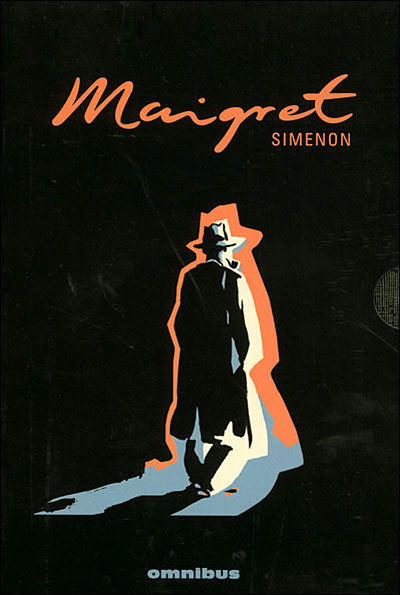

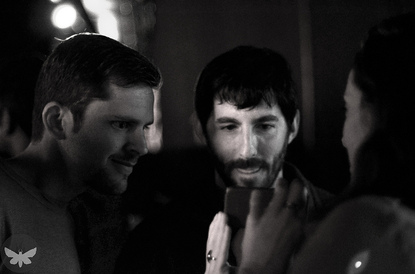
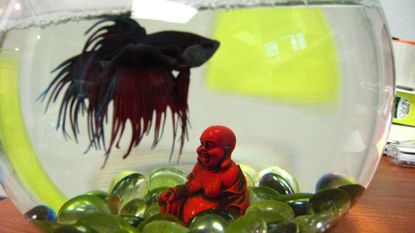
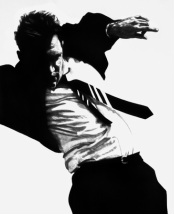
 RSS Feed
RSS Feed
